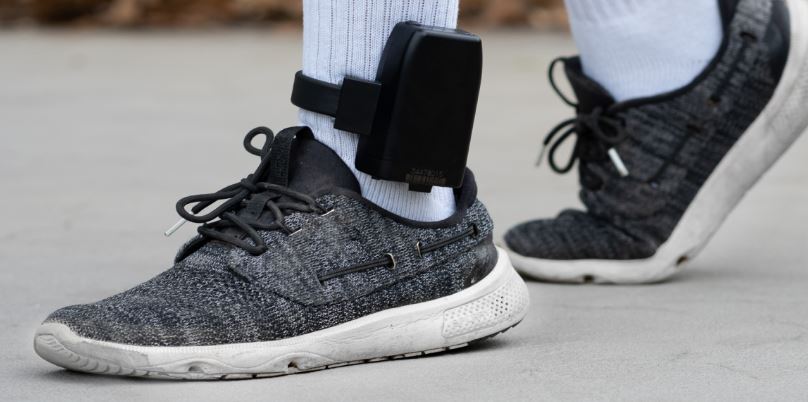In a much-heralded announcement of a swath of new hardline measures to combat domestic violence, the Premier ruled out absolutely the one initiative that can and will make a real difference today, not tomorrow or perhaps next year, but now when the ever-present danger exists for many victims of Domestic Violence.
It seems like the government is tone-deaf to the plight of these victims and is agnostic to their peril.
It is also clear that a very extensive evaluation of Project Vigilance (PV) conducted in Tasmania would seem not to have been considered or understood.
Premier, domestic violence victims are dying while you dither.
You may like to revisit what you said at the launch,
“When women are still dying at the hands of men — we must do more”.
And you have done more. If taking the wet lettuce leaf approach is more, then you have definitely done that.
However, given the reports in the media, you are not being helped by your Attorney General.
Jaclyn Symes has ruled out ankle bracelets or electronic monitoring as even a consideration to stop the carnage, and from her contribution, it was clear that she has been poorly advised, is reported as saying,
“The government had considered doing so but received advice not to proceed because the “disadvantages outweigh the advantages”.
A statement made without detailing what the advantages/disadvantages were, and then another gem the AG provided was,
“Ankle brackets can often provide a false sense of security for victims”.
“We do not want women relying on a piece of technology that has been demonstrated is not fit for purpose for these situations,”
If relying on technology avoids one more death, then it gets our vote. The research conducted in Tasmania debunks this ill-informed notion with evidence from victims. See the full report and access above.
Even if the Government does not share our view, the vast majority of the community will when they are informed of what this technology can do. And notably the cost savings made to the disbursement of their taxes.
There is also no reason the user pays principle cannot be applied subject to means testing to defray some of the costs in hardship circumstances.
Currently, in NSW, criminals seeking bail can pay a private contractor to provide an electronic monitoring option instead of being remanded in custody as another bail option.
The private contractor approved by the court operates a control room to monitor the criminal’s movements, taking into account restrictions put in place by the court, and any deviation is reported immediately to the Police.
Over 300 perpetrators have taken advantage of this alternative, and no problems have been reported.
There would be no apparent reason not to use this same system for Domestic Violence or, for that matter, recidivist juvenile offenders.
For Domestic Violence supervision, Electronic Management (EM) is a very effective and cost-effective way to save lives.
Anybody who has been served with a Family Violence Intervention Order (AVO) and chooses to breach that order in any manner must be required to be EM monitored.
In those circumstances, there are two EM devices.
The perpetrator wears a non-removable ankle monitor, which can be pre-programmed with exclusion zones such as the victim’s home address, work or even children’s school. Any attempt at entering these zones (which can be set to any radius) will trigger an automatic violation, and police will be notified.
The second device is for the victim and is as unintrusive as a small mobile phone or fob device.
The device becomes a protective geo-zone around the victim as they move around freely. The monitoring system monitors both the victim’s and perpetrator’s devices to ensure they do not come into close contact, allowing the victim complete freedom while retaining security.
The bonus is the peace of mind that the Victim is not continually looking over their shoulder once they step outside their home due to the virtual electronic fence protecting them.
If the perpetrator does appear to be breaching the exclusion zones and confronting the victim, the electronic monitoring devices provide crucial intervention time. The monitoring centre can call the victim and advise them to immediately enact their safe plan (whether going to the local police station or finding safety in a shop) whilst police are dispatched and apprehend the perpetrator.
Through the two-way communication device, the victim would be alerted should they venture into an area where the perpetrator lawfully is, avoiding unintended contact. An obvious example would be where the Perpetrator may be lawfully in a large shopping complex that the victim has also intended to visit.
When the victim arrives, they can be warned that the perpetrator is in the centre or has arrived, and the victim can take the necessary steps to avoid confrontation.
Looking more broadly, these devices, generally restricted to the parole period of a perpetrator’s sentence, could be applied to the other end, ensuring the suspects charged appear in Court, or, more importantly, cease criminal activities during the bail period. Moreover, more technically advanced EM devices can record and monitor conversations, a terrific disincentive for those wearing one to commit further offences.
Albeit highly effective and financially desirable, the EM devices could be used as part of a sentencing regime at a fraction of the cost of the current options, countering the undesirable side effects of incarceration.
The evaluation by ‘Project Vigilance’ also addressed the costs and found the electronic alternative very cost-efficient.
For example, monitoring offenders electronically equates to roughly $47 per day, whereas incarceration costs were calculated by Morgan (2018) as nine times the cost of community corrections at circa $427. That or a similar equation applies to a domestic violence perpetrator who breaches an AVO.
This cost disparity is even more significant when the savings made by policing and other agencies, including the Courts, are factored in.
This can be further mitigated when a user-pays interface is imposed, subject to a financial hardship assessment of their ability to pay.
A system where the most anybody can pay is 15% of their gross income every week.
Although there may be a need to change legislation, the physical implementation of the system is a matter of weeks, not years, as the private sector has already established protocols and the backend infrastructure and processes, including 24/7 control rooms and mobile service resources to maintain the equipment.
For the Government to start from scratch and build a network facility, apart from the physical accommodation infrastructure, technical expertise does not exist within current Government resources.
The action by Government is very urgent, everyday lost is potentially another life lost and the last thing that the community and the potential victims want is another inquiry or pilot or some other such construct to delay, all that work has been done.
There is a huge risk by ignoring what the work that has been done or trawling over the same ground, the committee or whatever title they have will end up designing a camel when they were supposed to design a horse. And while they are doing that more victims will die.
It is improbable that the necessary electronics expertise exists within the government, and considering a hybrid option is fraught with difficulty and likely to ensure the system doesn’t work or falls well short of optimum effectiveness.
It is, therefore, essential that the Government must look to the private sector.
The Government must act now.


I think this is a fantastic idea and if it saves the life or another woman, the costs are irrelevant. However given the minimal costs, why would Governments not adopt this strategy?
This solution is so logical and indisputable that there is no way this current government will implement it. As with Myki and various other Labor government initiatives, if they ever do implement the solution, it will have to be from the ground up, with their business and union mates lined up to make excessive profits, from which I have no doubt, there will be many ‘under the table’ payments’ to our Honourable members.
I’m not surprised by this at all. The bluster about women dying has nothing to do with the government wanting to prevent the problem. Feminist activists drive the agenda here, and all they care about is strategies that provide them with more funding – it’s a multi billion dollar industry that collapses the minute something practical is done that actually improves things. They don’t actually want vulnerable women to be safer – their livelihoods depend on the opposite being true.